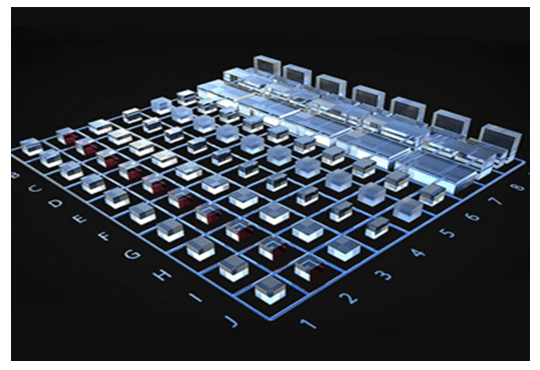Data centers are increasingly pivotal in the digital world, and there is an ever-growing need for faster and more efficient data transmission. Fiber optics remain the primary method of guiding optical signals from one point to another in a data center. However, single-channel transmission using a standard pair of fibers is unsuitable for the demands of modern communications. Multiplexing is an innovative method of dramatically increasing the transmission capacity of fiber optic links by enabling multiple signals to share a single channel. There are challenges, such as the risk of interference and signal degradation, but different forms of multiplexing offer different solutions to these issues. This blog post will explore the role of multiplexing in data centers with a focus on two of the most commonly used techniques: TDM and WDM.
The Importance of Data Centers
Data centers are like the nervous system of digitally-connected communities–be those businesses or metropolitan areas. They receive and transmit staggering volumes of data signals to control and coordinate various processes. According to a report by Cisco, global internet traffic was expected to reach 7.7 exabytes (EB) per day in 2021. A single exabyte represents a billion gigabytes, and the EB has been adopted as the most common measurement of global data traffic, given the exorbitant scale of growth. Multiplexing has become a critical method of meeting the incredible demands of modern data transmission, making it a crucial component of our digital infrastructure. Now let’s explore those two common techniques mentioned above.
TDM
Time-division multiplexing (TDM) divides a single communication channel into time slots. Each time slot is assigned to a different signal, and the signals are transmitted in a cyclic order. This is achieved using an interleaved pulse train where multiple data streams are combined into a single stream by separating each into a series of short, periodic pulses alternated in sequence. As with other forms of temporal multiplexing, critical requirements of TDM include extremely short pulse durations, often in the picosecond range.
WDM
Wavelength-division multiplexing (WDM), on the other hand, divides a single communication channel into multiple wavelength bands, with each band assigned to a different signal. These bands are known as WDM channels. Signals are multiplexed into different WDM channels by optical filters at the sender and demultiplexed by receivers, allowing multiple signals to be transmitted simultaneously. One advantage of the WDM approach is that it can be applied to existing fiber links with limited capacities, increasing bandwidth by replacing senders and receivers rather than cabling.
The Role of Optical Filters
Optical filters are used to filter specific wavelength channels. Ensuring that each signal is correctly transmitted without interference requires filters with high transmission efficiency, low insertion loss, and high out-of-band rejection is essential. Currently, two main optical filter types are used in multiplexing: Fiber Bragg gratings and thin-film filters.
- Fiber Bragg Gratings: FBGs are used in WDM because they provide a narrow and well-defined wavelength band, which enables the transmission of multiple signals at different wavelengths. FBGs work by reflecting a specific wavelength of light while allowing other wavelengths to pass through. This creates a wavelength-specific reflection that is used to separate the different signals. However, FBG systems require precise fabrication techniques to create the periodic refractive index structure, which can be expensive to build and maintain.
- Thin-Film Filters: Thin-film filters (TFFs) are used in WDM. TFFs work by reflecting specific wavelengths of light and transmitting others. This is based on the principle of thin-film interference, where thin layers of dielectrics are used to create a precise optical interference pattern. The different refractive indices of these dielectrics allows them to separate different wavelengths precisely.
While both FBGs and TFFs are effective at wavelength-specific multiplexing/demultiplexing, TFFs are the superior option in terms of their transmission efficiency plus ease of fabrication and integration.
Looking for Filter Solutions?
As data centers continue to play a crucial role in our digital infrastructure, the need for faster and more efficient data transmission has become more pressing. Multiplexing technology is a powerful solution to this challenge, allowing multiple signals to share a single channel.
At Iridian, we provide high-quality filter optics for improved data transmission efficiency. With decades of filter design and manufacturing experience, our team provides comprehensive support throughout a product’s lifecycle, from prototyping to high-volume manufacturing. Our advanced thin-film deposition technology enables us to deliver durable, high-performance filters for telecommunications, data centers, and other applications. Trust us to help you find cost-effective optical solutions that meet your specific needs.
References and further information
- https://www.cisco.com/c/dam/m/en_us/solutions/service-provider/vni-forecast-highlights/pdf/Global_2021_Forecast_Highlights.pdf
- https://www.rp-photonics.com/time_division_multiplexing.html
- https://www.rp-photonics.com/wavelength_division_multiplexing.html
- https://www.rfwireless-world.com/Terminology/Fiber-Bragg-Grating-Sensor.html

